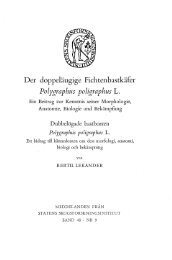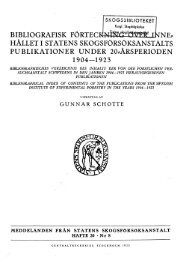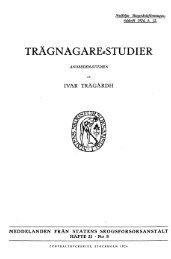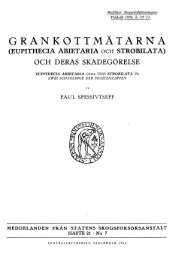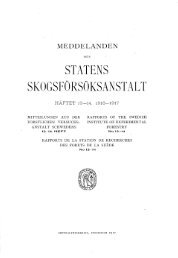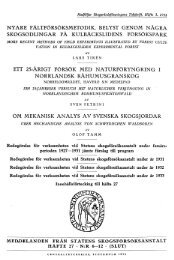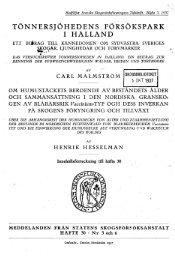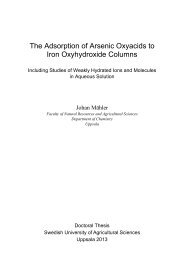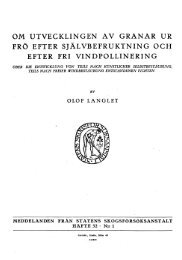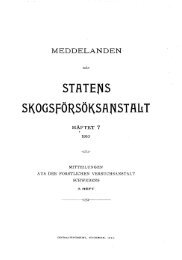SVERIGES LANTBRUKSUNIVERSITET - Epsilon Open Archive - SLU
SVERIGES LANTBRUKSUNIVERSITET - Epsilon Open Archive - SLU
SVERIGES LANTBRUKSUNIVERSITET - Epsilon Open Archive - SLU
You also want an ePaper? Increase the reach of your titles
YUMPU automatically turns print PDFs into web optimized ePapers that Google loves.
56<br />
MEASUREMENT OF PLANTWATER STATUS AND GAS EXCHANGE<br />
Introduction<br />
As mentioned above plant water status strongly influence plant growth<br />
through its influence on gas exchange and expansion of leaves and roots.<br />
Leaf water deficits cause stomatai closure limiting CO 2 uptake and hence<br />
net photosynthesis. Also plant water deficit may negatively affect the<br />
process of photosynthesis itself. The physiological consequences of water<br />
deficits in plants have been intensively studied and reviewed lately by<br />
Hsiao and Bradford (1983).<br />
The methodology applied for studying plant water status generally<br />
comprises measurement of both water con tent and water potential and its<br />
components of ten associated with measurements of other plant responses<br />
to stress; i.e. changes of growth rate, gas exchange, leaf resistance, stomatai<br />
opening, nutrient uptake, hormon balance etc. Below I will concentrate on<br />
approaches used for water content, water potential and gas exchange<br />
measurements. The subjects have recently been covered by the comprehensive<br />
volume written by Slavik (1974), by the review chapter of Bannister<br />
(1986) and the review papers of Turner (1981 and 1988) and Beadle et al.<br />
(1985).<br />
Water content<br />
A common approach for measuring plant water content is based on<br />
measurement of fresh weight (FW) at time of sampling, dry weight (DW)<br />
determined at 80°C, and turgid weight (TW). TW is obtained by floating<br />
leaves or leaf disks on water at the light compensation point for about 4 hs<br />
(Barrs and Weatherley, 1962). Thus, the following water content<br />
expressions can be obtained:<br />
Absolute water content, W = (FW - DW)/DW<br />
Relative water content, RWC = (FW - DW)/(TW - DW)<br />
Water saturation deficit, WSD = 1 - RWC<br />
Turgid Wt/dry Wt ratio = TW /DW<br />
Also indirect methods of measurements of leaf water content are available,<br />
such as using a source of beta radiation and relating count rates to water<br />
content (Bannister, 1986), or by direct measurement of leaf thickness by<br />
an inexpensive micrometer (Burquez, 1987).<br />
Water potential<br />
Measurement of total water potential has be come routine either by the use<br />
of termocouple psychrometer or pressure chamber. Equipment for the<br />
measurement of water potential by both techniques is commercially<br />
available.





